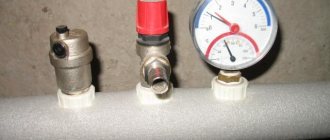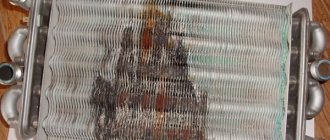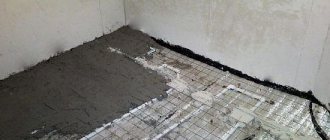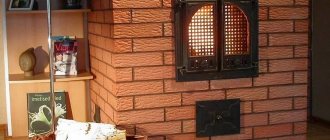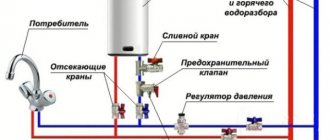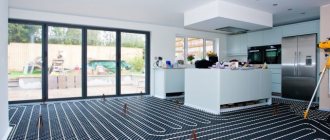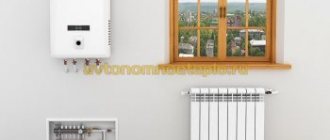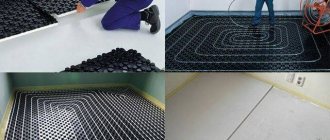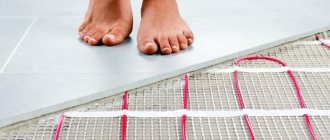Installation of a heated floor requires subsequent long-term and uninterrupted operation of the heating system. In a city apartment, private house or country house, water-heated floors are equally effective and convenient. Such a heating system can be equipped in almost any residential space, but the effectiveness of its use depends on the compliance of the technical characteristics of the equipment with the design features of the room. Correctly calculated and installed heating circuits and professionally performed pressure testing of the underfloor heating system will allow homeowners to forget about the hassle of servicing heating devices for a long time.
Pressure testing procedure for the heating circuit of warm water floors
However, the idyll cannot continue indefinitely - any technology is not eternal and needs repair over time. Heated floors are a complex complex of a wide variety of equipment, the failure of one of the elements of which can lead to failure of the entire heating system.
In some cases, for example, if there are problems with the throughput or tightness of the floor water heating pipe, it is necessary to drain water from the heating circuit when preserving housing.
Let's take a closer look at the cases in which it is necessary to drain liquid from the underfloor heating system, and how this is done.
The nuances of filling the system with coolant
First of all, before starting the heating of the floor covering for the first time, you should organize the circulation of liquid through the heating circuits and remove any air pockets.
The method in which the coolant will be supplied depends on the design features of a particular system. If you plan to use tap water, then a tap is specially installed for this purpose, which opens its supply.
When you need to fill in other liquids, then use the tip with a shut-off valve located in the manifold, in its supply part. Pressure testing equipment is connected to it, which is used, among other things, to fill the working medium into the system. Such devices are produced in manual and automatic types.
You don’t have to purchase a crimping machine, but rent it from a specialized store. But when the coolant is water, it must be used for a heated floor system annually before the start of the heating season in order to replace the working medium. Perhaps then it is better to purchase this device. To start the equipment, there must be a special tap on the output manifold.
Before filling the underfloor heating system with coolant, it is washed with running water. After completion of the installation work, lubricant and other materials from which the elements of the heat supply structure were made remain inside it. Often small shavings and construction debris get into pipes when they are laid.
For this reason, flushing is a must. For this purpose, the system is filled several times with water and then drained. Once the liquid becomes clear, the flushing is complete.
In addition to the first launch of a warm water floor, this procedure must be performed before each coolant replacement. When using soft or distilled water, this activity is carried out annually.
If antifreeze is used, the manufacturer's instructions should be followed. Some of them indicate the need to replace the coolant every second or third season, and some once every 10-15 years. But it is imperative to flush the system before doing this.
Why do you need to remove air?
The formation of voids reduces the efficiency of the heating system. Pumping equipment, like other components, operates less efficiently. To ensure comfortable indoor temperature conditions for users, more resources have to be spent.
As such voids increase, the pressure gradually decreases. After reaching the maximum minimum level, the corresponding signal is sent to the boiler control unit. In addition to electronic devices, mechanical means for similar purposes are used. This is an emergency situation, so the automation turns off the supply of gas or other fuel.
To turn it on again, you have to manually increase the pressure. But there are a lot of gaseous inclusions in fresh water, so negative processes are accelerated. The equipment will turn off more often.
It should be remembered that oxidation, which destroys metals, occurs in the presence of water and oxygen. Adding a new coolant activates the corresponding negative processes. In this operating mode, the durability of heating equipment is reduced.
It is necessary to exclude the appearance of air “plugs” in the heat exchange units of boilers. These parts are exposed to very high temperatures.
The reasons listed above are enough to understand the need for preventive measures. Carrying them out will prevent complex breakdowns and costs associated with restoration work.
Test run of water floor
After completing the assembly of the system, before pouring the screed, it is checked for functionality. Thanks to this procedure, it is possible to eliminate deficiencies made during installation. The circuits are washed and then filled with coolant that will be in the system.
Before making a screed, liquid should not be drained from the pipes; it should be laid when the pipelines are full so that they are in working condition.
There are three ways to check a heated floor before pouring and identify any shortcomings:
- the system is brought to operating temperatures and left there for several days;
- test under conditions of excess pressure on a cold coolant;
- perform air pressure testing.
The choice of testing method depends on the personal preferences of the property owner, but starting the system at elevated pressure without a concrete screed may result in the pipes flying out of their sockets. This occurs when using mounting tapes or single fasteners. It is advisable to install a thermostat for a water heated floor, which will save resources.
To prevent this, before the test run, beacons for the screed are installed with a specific step and secured with small portions of the solution. Pressure testing can be carried out after the cement holding the guides has set. It turns out to be a kind of frame that holds the pipes, and as a result they remain in the nests.
Guides will not interfere with eliminating deficiencies. If during the installation process the pipes were not bent and the coil was rolled out, then the pipelines are intact and there will be no problems with them. Leaks can only appear at the junction of the pipes with the collector or in the piping of the heating boiler.
The frame should be constructed when self-focusing fastening systems were used. If the pipes are fixed to the mesh, problems do not arise.
System testing using each method is performed in a certain sequence:
- The first option is running at operating temperatures . The system is brought to the desired temperature regime gradually, starting from 20 degrees and raising it to 50 degrees. At this time, observe the contours, joints and connections. If leaks occur, the system is stopped, the liquid is drained, the faults are eliminated, it is refilled and tested again. After bringing the working environment to the required temperature, the heated floor is left for 2 - 3 days. If there is no damage, the screed is poured, having cooled the coolant in advance.
- The second option is checking under high pressure conditions . It's easier to do. The structure is filled with a working medium, a pressure is created that is 1.5 - 2 times higher than the working pressure in the underfloor heating system, and they wait 24 hours. If the drop in this parameter in circuits made from PERT or PEX products does not exceed 1.5 Bar, this means that there are no leaks and the screed can be made. If there are deficiencies, a set of measures described in the first testing method is carried out.
- The third option is dry pressure testing , which is used if it is impossible to use a coolant. In this case, air is pumped into the system by a compressor. But in this situation it is necessary to create a pressure 2–3 times higher than the operating parameters. You need to know how to pressurize a heated floor with air, since this method is not considered reliable, especially when antifreeze is used as a coolant. Therefore, experts advise checking with working fluid, especially since the screed is poured with pipes filled with liquid.
When the test is carried out at pressures above 4 bar, the air vent valves must be closed. The fact is that after a while liquid begins to flow out of them.
Each testing method described above is used for a specific type of pipe product. For example, for metal-plastic pipes, a cold water test is used at a pressure of 6 bar. If this indicator has not decreased within 24 hours, this means that the system can be filled with a mixture of cement or base sheets can be installed when the flooring system is being installed.
Crimping of cross-linked polyethylene structures is performed differently. First, it is checked 3 times on cold liquid under high pressure. The value of the test indicator should be 2 times higher than the working one, but not less than 6 Bar. It is brought to 6 bar, then it begins to decrease.
After 30 minutes, the pressure in the system is again raised to 6 bar, and after half an hour the procedure is repeated again. This is done 3 times. Next, the pressure is increased to pressure testing (it is 2 times more than the working pressure) and left for 24 hours. If during this period the drop is insignificant - less than 1.5 Bar - and there is no trace of leaks, then the test has been successfully completed. It is necessary to obtain a crimping certificate after completion of work.
By the way, according to the standards in force in Germany - it is in this country that there are the most stringent requirements regarding the safety of using construction technologies and materials - after completing pressure testing in cold water, you need to run the system at operating temperatures.
To do this, the heating equipment is gradually brought to the required temperature and left for several days. If all tests are successfully passed, this means that the system is reliable, you can make a screed and start launching the heated floor.
Formation of air masses in a heated floor system
A pump is needed to bleed the system.
How to bleed air accumulated in the system will depend on the incident that led to such a result.
Some circumstances require immediate intervention, while others are not capable of causing significant damage to the system.
If the heated floor was installed with noticeable differences, it is worth acquiring an additional pump for pumping the coolant.
Running the circulation pump will also help expel excess air. The more air has accumulated, the louder the circulation pump will work.
It is worth paying attention that the system must be pumped at maximum speeds. This will significantly save time and allow you to completely remove air from the system.
If it was recently pumped, but the air has already collected again, the problem may be in the pump itself.
Air vent
With the comb installed, each circuit is closed in turn, and the air vent must be open on each of them. It is necessary to bleed air gradually, so after cleaning the first circuit, the next one opens. The descent is carried out in stages and at the moment of bleeding only one circuit should be open.
If this procedure does not give the expected result, the next air release should be carried out no earlier than in a few days.
To properly clean the system, a person must understand the structure of the comb and understand the principle of its operation. If you do not have the necessary knowledge, you should seek help from specialists. watch the release of air in this video:
Coolant refilling process
Before filling the water heated floor with coolant, all valves on the collector unit are closed, and the hose is connected to the inlet tip. When it is planned to flush the system, a hose is installed at the outlet, the opposite end of which is inserted into the sewer system, drainage pit or into a special container.
Filling begins with the first loop, for which the valves on this circuit are opened, and all the others are left closed. The pipes are filled with liquid and air is released, resulting in a hissing sound in the air vent valves.
The pump is turned on for a short period, the noise of the valves is heard again, after which it is turned off. Next, wait until the air is completely released and turn on the pumping equipment again. The process is repeated until all air pockets are eliminated and the second loop begins to be filled.
Before filling the second circuit, the valves of the already filled circuit are closed. The procedure is carried out until all loops of the system are filled. Then all inlet and outlet valves on the circuits are opened, and the coolant is pumped until the air is completely removed. The system is now prepared for testing or launching water heated floors.
How problems appear
In parts of the system that are connected to radiators, problems can be detected quickly. They are located indoors, so noise is heard when air passes through. By touch, the low temperature of individual sections of the batteries where gas “plugs” have formed is determined.
But the pipeline, hidden deep in the concrete screed, is well insulated. If the cabinet with a collector comb and pump is installed away from living rooms, extraneous sounds will not be heard. Malfunctions are detected by significant differences in heating in different circuits.
The following list shows the reasons that contribute to the penetration of air into the coolant:
- Replacement of taps and other system elements;
- Faulty condition of automatic devices that are designed to remove air from the system;
- Laying a pipeline route with large differences in height;
- Significant change in pressure level during operation. With low pressure, voids may form at the top points;
- Excessive heating of the coolant, accompanied by the release of gases. Some types of chemical compounds can cause similar negative processes;
- The process of filling the system after the summer period was carried out too quickly, so not all the air was removed;
- During installation of the system or later, the tightness of the connections was broken. In the worst case scenario, leaks have formed inside the concrete screed. For this reason, after installing heated floors, a thorough check is carried out using high pressure.
Startup sequence
Within a few days, the water floor system is brought to operating temperature conditions. First, the supply temperature is set at 20 - 25 degrees and then every day it is increased by 5 - 10 degrees. It is increased by 5 degrees if antifreeze is used, and if water is used, then by 10 degrees.
In addition, the rate of temperature increase depends on the size of the heated area. If the screed has a small array, then it reaches the desired mode earlier. But at the same time, experts advise not to rush, since if it warms up quickly and unevenly, it will become covered with cracks, and if a non-freezing liquid is used, it may overheat and the entire system will fail.
Who should do this?
The management company is responsible for the serviceability of communication networks in apartment buildings. The drainage of the heating riser must be agreed upon with them. And most often, invite their own specialists. Hence the questions and ambiguities:
1. Can I choose my own date?
Almost impossible. The management company itself determines the day and time. You can ask to drain the water from the system within a certain time frame only through great connections.
2. At whose expense is the heating riser drained?
Only at the expense of the tenants. They will ask for money both for the approval procedure and for the participation of specialists. Tariffs in different regions and in different companies vary greatly. It is impossible to predict the amount. In one town they will ask for a thousand, and in another - five. The price includes turning off the system, draining the coolant and then filling the network.
If repairs need to be done at the height of the heating season, you will have to convince the management company of the dire need and pay many times more. If it’s below thirty degrees outside, no one will turn anything off. The only exceptions will be emergency situations.
Draining water from circuits
The design of a water floor, if installed correctly, will not have a tap or a lower point. For this reason, a compressor is used. Before draining the heated floor, this device is connected to the supply manifold. When it is factory assembled, then it has devices that prevent the reverse movement of the coolant.
At the liquid fill valve located on the supply manifold, remove the air vent and screw the adapter into this place and connect the compressor output. A hose is connected to the drain hole on the return manifold and discharged into a container or sewer.
The shut-off valves on one loop remain open. After turning on the compressor, the liquid begins to drain under pressure. The device is not turned off until an airborne suspension appears. Only then is it turned off, the valves of the first circuit are closed, the shut-off valves of the next loop are opened and the compressor is turned on again. As a result, water is drained from the entire system.
Since the length of the contours can be significant, a considerable amount of liquid remains on their walls. It is removed again, repeating the above procedure after a few hours.
After installation is completed and before operation, you need to fill the system with coolant and start the heated floor for the first time. The working medium is replaced depending on its type. The water is changed every year, and the antifreeze liquid is changed once every 3 to 5 years.
Removal algorithm
At the highest points, gas accumulates during the movement of the coolant. When using a heated floor system, the comb or distributor acts as the device with which the work is carried out. Otherwise, you will need to purchase more expensive equipment for removing air masses. For more information about pumping heated floors, see this
Below are the necessary steps to rid the underfloor heating system of air.
- Most pumps are equipped with a step speed controller. It is installed in position “1”, which will allow it to operate at minimum speed. It will pump a little longer, but will allow you to completely remove the accumulated masses.
Close all paths except one
- The next step is to cover all the contours except one. This sequence must be followed throughout the operation in other areas.
- After removing the air masses, the tap is turned clockwise until completely closed.
- Since the engine will operate at low speeds, a similar procedure will need to be carried out repeatedly. The pump turns off after the first release of gases. Upon completion of all work, the tap opens again. Power is supplied, which will allow the coolant to run at low speed for a couple of minutes.
- This operation must be repeated at least 4 times. After turning off the circuit with the tap, move on to the next one.
READ How to remove the lock from a nardi oven
After all manipulations are completed, the pressure rises to normal operating levels.
What are the dangers of air jams?
If there are voids in the pipes, heating the floor will be less effective. If you do not pump the pipeline, the voids will increase and lead to a decrease in pressure.
Depending on the design features of the device, airiness can lead to:
- to freezing of pipes in corner rooms - when installing floors from central heating;
- to a complete or partial cessation of heating - in the presence of heating hydrofloors and radiator heating operating from the central heating of the entire house located in the basement;
- to partial or complete cessation of heating, the occurrence of emergency shutdowns of the boiler and freezing of CO - with floors operating from an autonomous heating system;
- to a complete or partial stop of heating, as well as to frequent interruptions in the operation of the boiler - if the house has heated floors and radiator appliances that operate from an individual heating source.
For your information! Taking into account all the design features: the number of loops in the room, the presence of separate wiring for each room, we can say with confidence that a complete cessation of circulation in the pipeline cannot occur.
Only if all loops of the circuit are clogged with plugs at the same time will the water stop moving along the main line through all rooms and floors of the house, as a result of which all heating will stop functioning.
How to bleed air from a circuit operating from a circulation pump
To remove air from a sex circuit equipped with a pump, you must perform the following steps:
- It is necessary to close the flow meters on the manifold leading to all loops.
The process of opening the Mayevsky tap is to hold the white part of the valve with one hand so that it does not dangle. The second is to unscrew the valve located in the middle.
- Then you need to turn on the circulation pump at low speeds. The pressure should be 20% higher than normal.
- This procedure must be repeated several times, at intervals of several minutes, until all the air is drained.
- This action must be carried out with each loop. Repeat the process for 2 - 3 days until the air is completely bled out.
- Then the pump must be turned on to maximum and the entire pipeline must be purged.
Only after complete bleeding of the air masses should the heating floor be started. During operation, the circuit may become airy again, so it is recommended to periodically press out the air .
Sources:
https://stroiintel.ru/kak-vygnat-vozduh-iz-teplogo-vodyanogo-pola/ https://gurupola.ru/teplye-poly/kak-vygnat-vozduh-iz-vodyanogo-pola.html https:/ /azbukaplavania.ru/stroitelstvo/kak-udalit-spustit-vygnat-vozduh-iz-teplogo-vodyanogo-pola-poshagovaya-instrukcziya
Design features
It is necessary to take into account in advance the details that distinguish certain equipment. So, in some situations, a built-in boiler pump is used to circulate coolant throughout all circuits. For a large facility, its performance may not be enough, so you will need to install a separate power unit.
When using radiator heating, routes are created with a minimum number of turns, without sharp corners. By adding tilts towards the boiler, natural circulation can be ensured under the influence of gravity.
In heated floors, long pipelines with a large number of bends are installed
It is more difficult to pump water through such a system. Only coercive methods are used here. If there are errors in the calculations, the power of a separate pump will not be enough for distant circuits. In this case, their poor heating cannot be eliminated by removing air plugs. The system will need to be modernized.
The comb regulators must first be correctly adjusted. In addition to mechanical flow meters, valves with electric drives are installed. Such devices change the coolant supply rate taking into account the readings of temperature sensors.
Automated adjustment system
